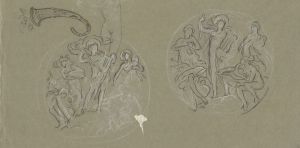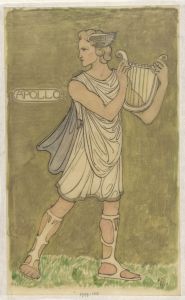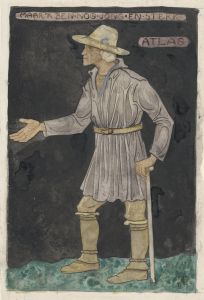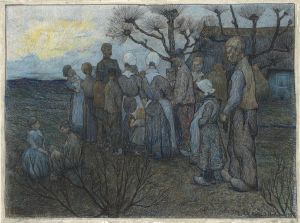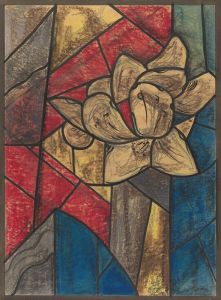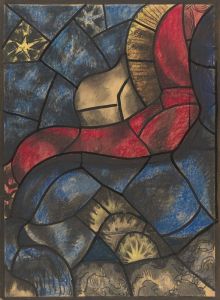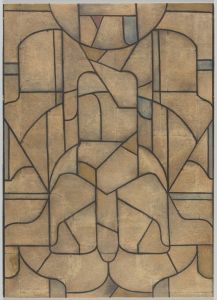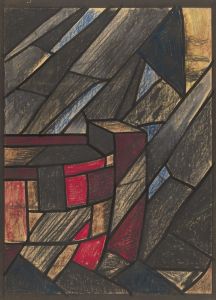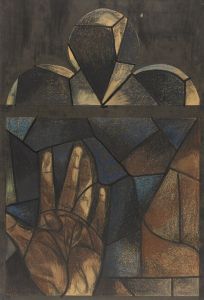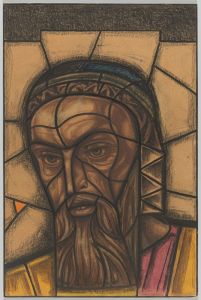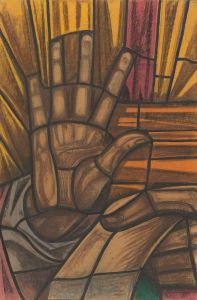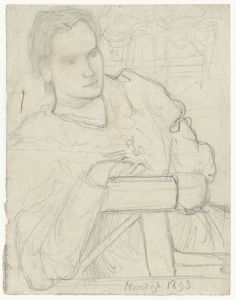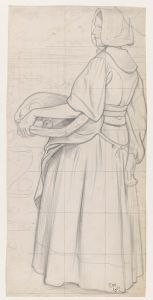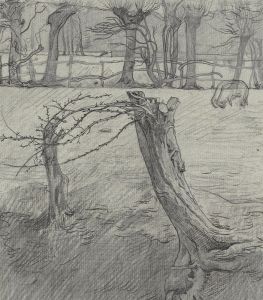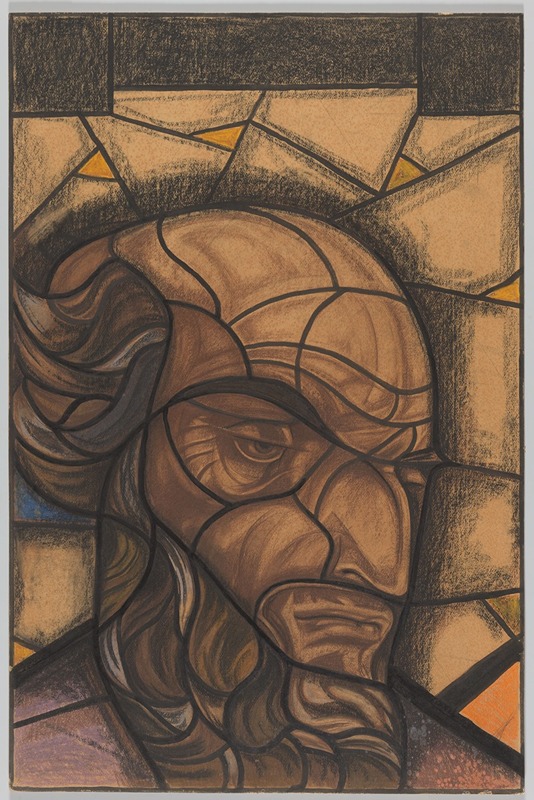
Ontwerp voor raam in het Zuidertransept van de Dom te Utrecht 3
A hand-painted replica of Richard Nicolaüs Roland Holst’s masterpiece Ontwerp voor raam in het Zuidertransept van de Dom te Utrecht 3, meticulously crafted by professional artists to capture the true essence of the original. Each piece is created with museum-quality canvas and rare mineral pigments, carefully painted by experienced artists with delicate brushstrokes and rich, layered colors to perfectly recreate the texture of the original artwork. Unlike machine-printed reproductions, this hand-painted version brings the painting to life, infused with the artist’s emotions and skill in every stroke. Whether for personal collection or home decoration, it instantly elevates the artistic atmosphere of any space.
"Ontwerp voor raam in het Zuidertransept van de Dom te Utrecht 3" (Design for a Window in the South Transept of the Dom Church in Utrecht 3) is a work by the Dutch artist Richard Nicolaüs Roland Holst (1868–1938). Roland Holst was a prominent figure in the Dutch art world during the late 19th and early 20th centuries, known for his contributions to painting, graphic design, and monumental art. He was associated with the Arts and Crafts movement and was influenced by Symbolism and the work of William Morris.
This particular artwork is a design for a stained-glass window intended for the south transept of the Dom Church (Domkerk) in Utrecht, the Netherlands. The Dom Church, originally a Roman Catholic cathedral, is a Gothic-style structure that has been a significant landmark in Utrecht since its construction began in the 13th century. Following the Reformation, it became a Protestant church and remains an important historical and cultural site.
Roland Holst's design reflects his characteristic style, which often combined intricate patterns, symbolic imagery, and a focus on spiritual or allegorical themes. His stained-glass works were highly regarded for their craftsmanship and artistic vision, and he received numerous commissions for ecclesiastical and public buildings throughout his career.
The design is part of a series of preparatory works created by Roland Holst for the Dom Church. These designs were intended to complement the architectural and spiritual atmosphere of the building. While the specific details of this particular design are not widely documented, it is consistent with Roland Holst's broader body of work, which often featured religious or mythological motifs rendered in a harmonious and decorative manner.
As with many of his stained-glass projects, the design process would have involved careful planning and collaboration with craftsmen to translate the artwork into the medium of colored glass. Roland Holst's stained-glass windows are celebrated for their vibrant use of color, dynamic compositions, and the integration of art with architecture.
The extent to which this specific design was realized or installed in the Dom Church is not clearly documented in available sources. However, it remains an example of Roland Holst's dedication to creating art that bridges aesthetic beauty and spiritual meaning.
Richard Roland Holst's legacy as an artist is preserved through his contributions to Dutch art and his influence on subsequent generations of artists. His works, including designs such as this one, continue to be studied and appreciated for their artistic and historical significance.





